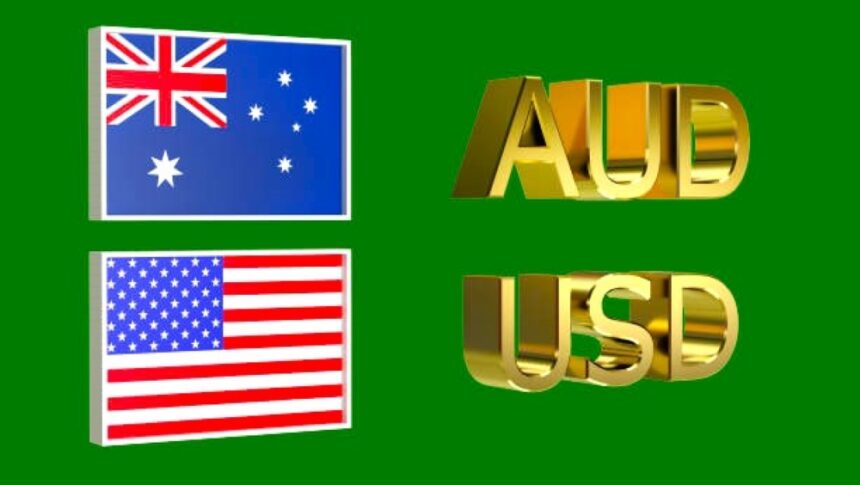The president Trump’s tariff hike, growing trade tensions may pose a threat to the Australian dollar.
On Wednesday, the Australian dollar (AUD) remains stable in relation to the US dollar (USD). However, US President Donald Trump’s 25% tariff hike and Fed Chair Jerome Powell’s statement that the central bank was not in a rush to further lower interest rates presented difficulties for the AUDUSD pair.
Israeli Prime Minister Netanyahu threatening to break the ceasefire in Gaza, the AUD may continue to fall as geopolitical concerns increase.
Late Tuesday, Peter Navarro, President Trump’s trade adviser, attacked Australia, claiming the nation of merely one day after Trump issued executive orders imposing import taxes on specific metals, accusing him of “killing the aluminum market” Due to the trade imbalance between the two countries, Trump has said he would give “great consideration” to Australia’s request for exemptions from the new steel and aluminum tariffs.
On Monday, Australian Trade Minister Don Farrell reaffirmed that Australia had been advocating for a tariff exemption akin to the one it obtained in 2018 during the Trump administration.
Geopolitical dangers are still high in the interim. According to the BBC, Israeli Prime Minister Benjamin Netanyahu issued a warning late Tuesday that if Hamas did not free the prisoners by Saturday noon, the ceasefire would end and Israel would return to “intense fighting” in Gaza.
At home, anticipations for a Reserve Bank of Australia Rate cuts from Australia (RBA) are getting worse. At its February meeting, the central bank expected to reduce its current cash rate of 4.35%. Since new data indicates that underlying inflation is falling more quickly than the RBA had anticipated, traders now see a 95% chance of a cut to 4.10%.
Daily Market Update: Australian dollar may weaken as the likelihood of the Fed remaining aggressive increases.
As of this writing, the US Dollar Index (DXY), which compares the value of the US dollar to six other major currencies, is still trading close around 108.00.
On Wednesday, traders await the US Consumer Price Index (CPI) inflation report. The headline While core CPI inflation predicted to slightly decline to 3.1% from the most recent estimate of 3.2%, US CPI inflation is likely to remain at 2.9% YoY. Powell stated that the Fed “does not need to be in a hurry” to lower interest rates because of the robust labor market and steady economic growth in his semi-annual report to Congress. He went on to say that the tariff actions of US President Donald Trump might increase pricing pressure and make it more difficult for the central bank to cut interest rates.
Fed Chairman Powell indicated there is no pressing need to lower interest rates, the US dollar may appreciate.
In light of growing concerns over inflation, a Reuters survey of analysts now predicts the Fed will postpone lowering interest rates until the next quarter. A lot of people who had previously predicted a rate drop in March have changed their predictions. Though opinions on the precise timing are still mixed, most economists polled between February 4 and 10 expect at least one rate drop by June.
The US dollar is supported as the US Federal Reserve (Fed) is now anticipated to maintain stable interest rates this year after Friday’s release of the January jobs data, which showed a lower unemployment rate but slower job creation.
By extending steel and aluminum tariffs by 25% to all imports, US President Donald Trump revoked trade agreements with important US allies, such as Australia. In addition to confirming that all import tax exemptions had been lifted, the White House said that other measures pertaining to microchips and automobiles would be taken into consideration in the weeks ahead.
Austan Goolsbee, president of the Federal Reserve (Fed) Bank of Chicago, stated on Friday that the US government’s contradictory policy approaches create a significant degree of economic uncertainty that makes it challenging for the Fed to make a decision about the probable direction of the economy, and inflation in particular.
Adriana Kugler, a member of the Fed Board of Governors, stated that while overall US economic activity and growth are strong, the Fed’s progress toward its inflation targets has been a little uneven, according to Reuters.
Minneapolis Fed President Neel Kashkari stated in a CNBC interview that if they see positive inflation data and the labor market continues to be robust, he would shift toward backing additional rate decreases.
China’s Consumer Price Index (CPI) rose at an annual pace of 0.5%.
In January, China’s Consumer Price Index (CPI) rose at an annual pace of 0.5%, which was higher than the 0.4% market prediction and up from 0.1% in December. Although it was less than anticipated, CPI inflation increased by 0.7% on a monthly basis in January as opposed to December’s flat figure of 0.8% rise.
https://voiceoftraders.com/analysis/eurusd-under-pressure-as-the-interest-rate-decision-looms-big









